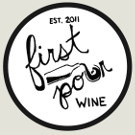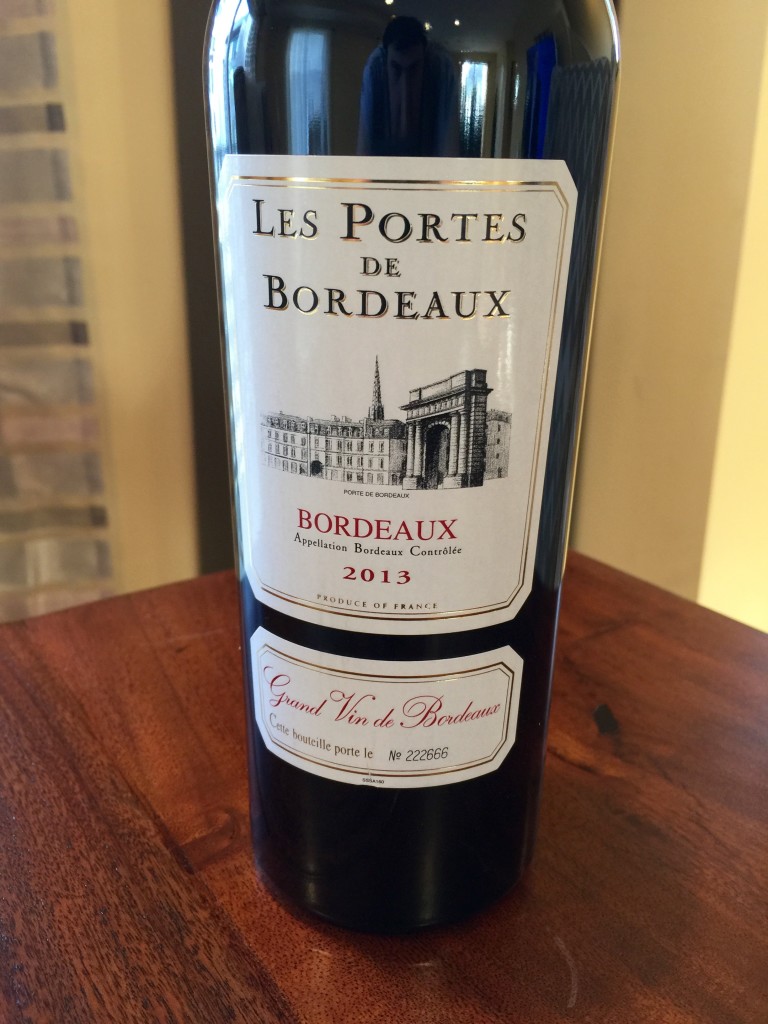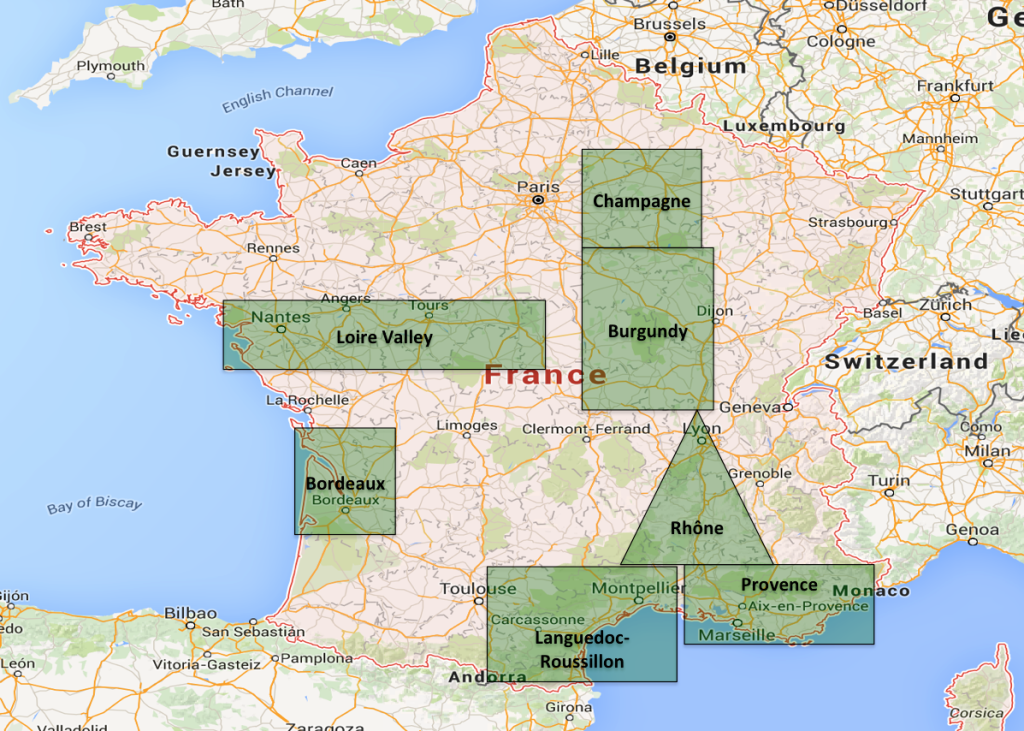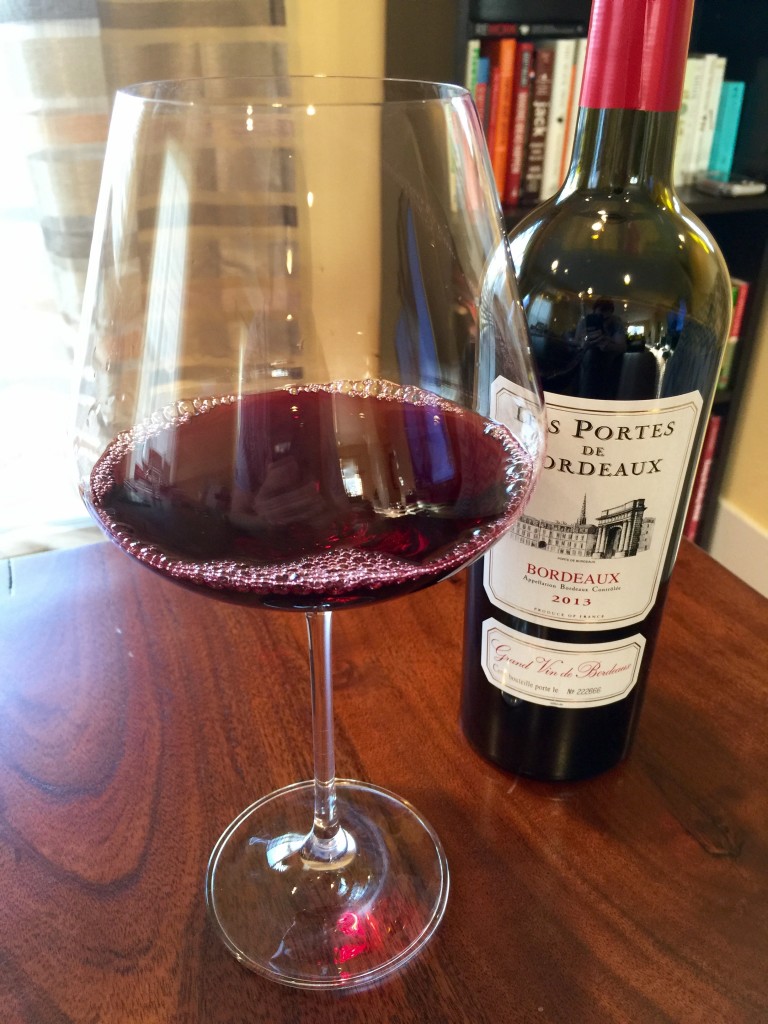Welcome to the start of our overview on wines of France. While France may fit inside the state of Texas, it produces more wine than almost anywhere else on the planet. While many regions of France might be considered the premier region that helped put it on the map, perhaps none evokes the money or prestige of Bordeaux.
Bordeaux
Blessed with the Atlantic’s maritime influence, and a forest separating it from the coast, Bordeaux’s climate is moderated well, helping it to avoid frost, poor weather, and provide an opportunity for the botrytis that helps make Sauternes (one of the most sought after dessert wines). While this may sound like just one region, it’s broken down into many smaller classifications, and is so large, it actually outproduces entire countries. So while $1,500 bottles can come from Premier Crus, it also means there are a lot of cheap bottles that come out of the area.
To try to keep things more simple, we’ll skip over the complicated ranking systems, and instead more focus on some general knowledge that can help you getting.
Major Grapes:
Four grapes make the foundation of most Bordeaux wines:
- Cabernet Sauvignon
- Merlot
- Sauvignon Blanc
- Semillon
Outside of these grapes, there are plenty of other grapes, like Cabernet Franc, Petite Verdot, and Malbec that are also permitted. This of course means that most of the wines in Bordeaux are blends, and take full advantage of the nuances of the grapes and soil.
Major Regions within Bordeaux
While Bordeaux has a huge number of areas, we’ll stick to just a few for this:
- Left Bank (Cabernet heavy) – Médoc (including Médoc, Haut Médoc, Pauillac, Margaux, Saint Julien), Graves, Barsec, Sauternes
- Right Bank (Merlot heavy) – Pomerol, St. Émilion
- Côtes de Bordeaux (across from Médoc)
Principle Flavors:
- Left Bank: Black Currant, Violet, Tobacco, Cocoa
- Right Bank: Leather, Strawberry, Plum, Vanilla
- Côtes de Bordeaux: Spicy Red Fruit, Herbs, Bell Peppers
- Sauternes: Honey, Peach, Waxy
Plenty of these regions actually make age worthy wines, but you’ll want to look for a reputable producer, have the right storage conditions, and when in doubt, ask your local wine shop clerk (they’ll have a good idea!).
Les Portes De Bordeaux 2013
Given Les Portes De Bordeaux isn’t exactly pedigree Bordeaux, but is cheap, how does it do as a representation.
Sight: A firm ruby red that’s very transparent.
Smell: Cranberries and currants get mingled with sage and rosemary. Elements of blueberries, spice, and violets are all present, but hide under a bright layer of underripe fruit and greenery
Sip: Bright and velvety in nature, it wraps around your tongue, and holds on tight. The bitterness starts with greenery, black pepper, plum skin, and tea. There are elements of dark fruit, but they’re rather muddled.
Savor: The finish is moderately tannic, and has some dark fruit and earth elements. The finish is fairly simple and ends quickly.
Les Portes De Bordeaux may not be the iron fist in a silk glove that Bordeaux is known for, but it’s not bad either. In this case, the price point indicates the value you’re going to get, which is ok. As cheap plonk goes, it’s certainly drinkable, and a good lesson in how the competitive landscape of Bordeaux lends itself to lots of bottles, but also in supply / demand economics based on quality. If you have to drink something tannic, Les Portes De Bordeaux isn’t the worst, but it’s not brilliant either.
Verdict: Cranberries, Currants, Tannic, Herbal
Rating: 70
Price: $8
Bordeaux, France



